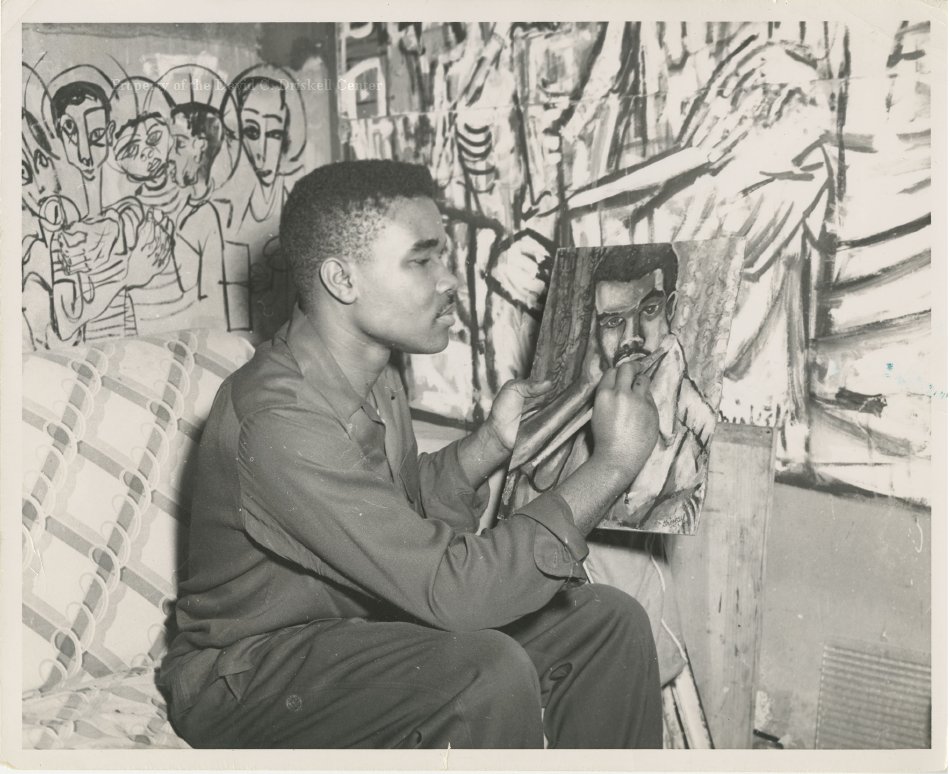David C. Driskell began his academic career at Howard University in Washington, D.C., as a history major in 1950. It was James A. Porter, then a faculty member in the Department of Art, who saw Driskell's work and urged him to become an art major. Porter, author of the seminal "Modern Negro Art" (1943), had established the field of African American art history and paved the way for Driskell's scholarship.
Driskell went on to study painting with Porter and watercolor and design with Loïs Mailou Jones. He also studied art appreciation with James V. Herring, the founder of Howard University's art department in 1921, first director of the Howard University Gallery of Art (established in 1928), and in 1943, with his former student, Alonzo J. Aden, founder of the Barnett Aden Gallery in Washington, D.C. Barnett Aden was Washington, D.C.'s first private gallery of African American art, and where Driskell first saw works by major African American artists like Jacob Lawrence and Romare Bearden. It was there that Driskell would have his second solo exhibition, in 1957.
On Jan. 9, 1952, David Clyde Driskell married Thelma Grace Deloatch and the couple had their first daughter by the time Driskell was attending Skowhegan School of Painting and Sculpture in Maine on a full scholarship in the summer of 1953. Driskell's lifelong relationship with the Skowhegan School and the state of Maine began that summer.
In 1955, Driskell accepted his first teaching position, at Talladega College in Alabama, a post recently vacated by the artist Claude Clark. Driskell taught a full range of studio subjects, including ceramics, in which he had no prior training. At Talladega, Driskell also became a curator where he initiated working relationships with major museums around the country, including the Guggenheim Museum in New York City, from which he borrowed works for exhibitions in 1956 and 1958. It was also during his time in Alabama that Driskell continued to experiment with painting pine trees, a motif he returned to throughout his career.
